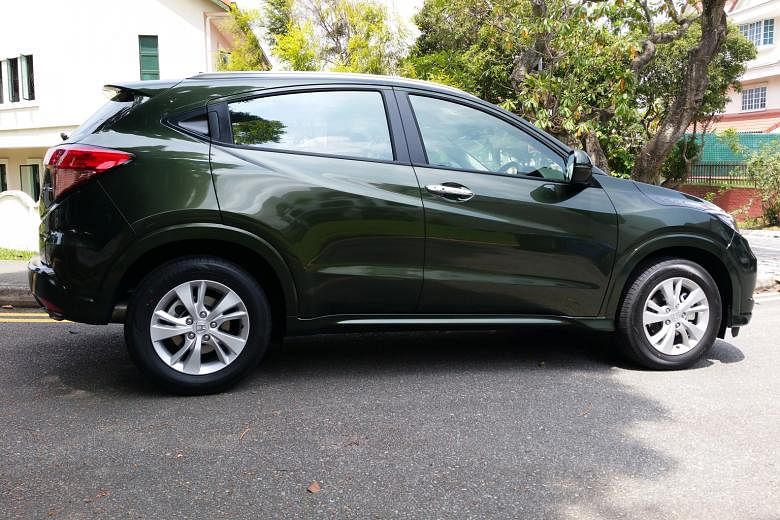When Honda agent Kah Motor launched the HR-V crossover last year, it was a case of David going against Goliath - minus the slingshot.
The HR-V was Thai-made, less powerful, thirstier and costlier compared to the equivalent Honda Vezel, which was parallel-imported from Japan, more powerful, more economical and substantially less expensive.
To make matters worse, the Vezel had a head start of more than a year. As expected, the HR-V was no match for the Vezel.
Honda has however decided to replace Kah's Thai-made car with the Japanese model in a facelift, which just arrived. While it is still called the HR-V, it is not the same car as before.
The main difference lies with its engine, a 1.5-litre normally aspirated direct-injection unit. The previous engine had a less efficient port fuel injection system.
-
SPECS / HONDA HR-V (LX)
-
Price: $114,999 with COE
Engine: 1,496cc 16-valve inline-4
Transmission: Continuously variable transmission with manual override
Power: 130bhp at 6,600rpm
Torque: 155Nm at 4,600rpm
0-100kmh: 11.8 seconds
Top speed: 181kmh
Fuel consumption: 5.7 litres/100km
Agent: Kah Motor
The engine produces 130bhp and 155Nm from 6,600rpm and 4,600rpm respectively, compared with the previous unit's 120bhp and 145Nm.
At the wheel, the latest HR-V feels a tad more energetic and spontaneous, especially at lower speeds. It revs more freely, with a throttle response that is smooth and linear.
Honda, however, says the car's 0-100kmh timing remains unchanged at 11.8 seconds, even if it does feel quicker than that in real life. This could mean that the power plant is tuned more for efficiency than performance in day-to-day situations.
The specifications seem to suggest this. Honda says the car emits 129g of CO2 instead of 155g per km, and consumes 5.7 litres of petrol per 100km instead of 6.5 litres.
The latest HR-V reaches a higher top speed of 181kmh though, up from 179kmh previously.
On the road, the HR-V is breezy and agile enough 80 per cent of the time. The other 20 per cent makes you wish it had a nice beefy turbo like its Civic sibling.
The car offers the same high level of practicality and versatility for a compact crossover.
On-board features that make it stand out from the crowd include cruise control (with easy-to-use steering-mounted switches), electronic parking brake (with automatic release and hold functions), and a 7-inch infotainment touchscreen that doubles as a reverse camera monitor.
The latest car has LED headlamps with daytime-running lights, whereas the previous version had halogen headlamps without any daytime-running LEDs.
The higher grade LX variant has body-coloured bumpers and wheel arches. It has roof rails, as well as more airbags - front, side and curtain. The lower grade DX variant has only front airbags - the same as in the Thai-made HR-V.
In essence, the Honda crossover is a more complete car than it was before. But what will seal the deal is its competitive sticker prices, which start from under $110,000.
The previous version (arguably, a lesser car) was about $145,000 - more than $20,000 higher after discounting the difference in COE premiums. The price is also close to what parallel importers are charging, even though the open-market value of Kah's car is slightly higher.
It looks like David has the slingshot now.


